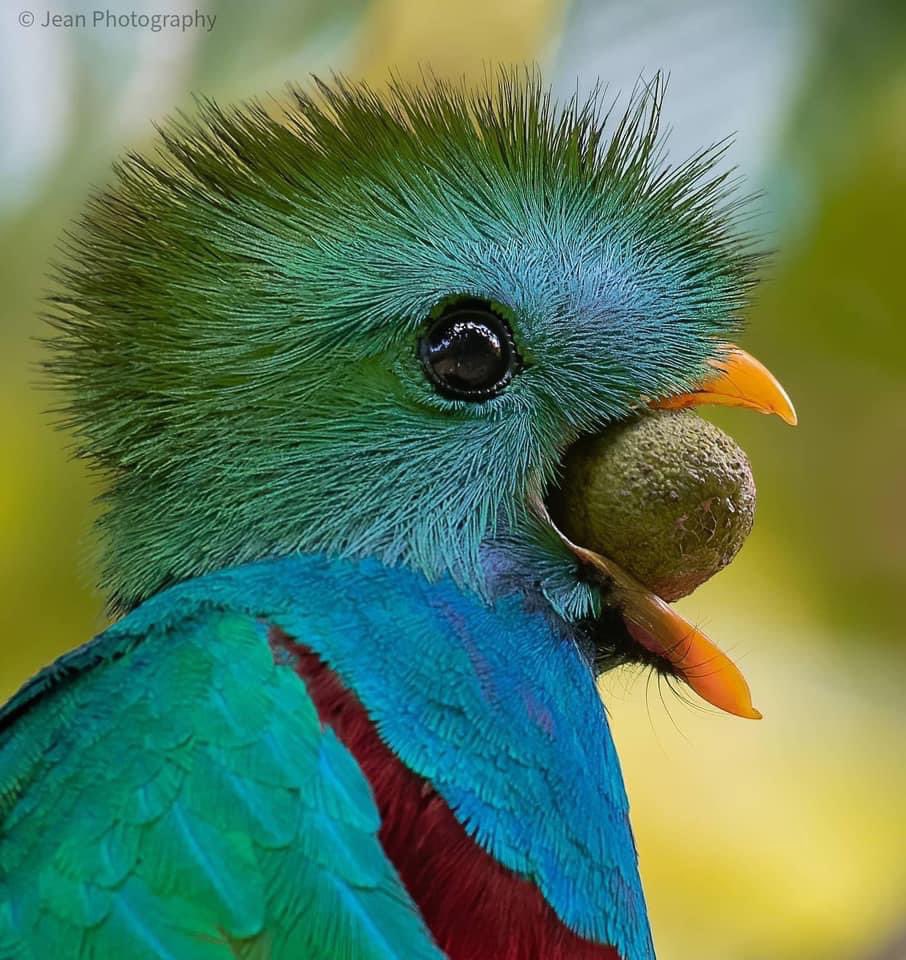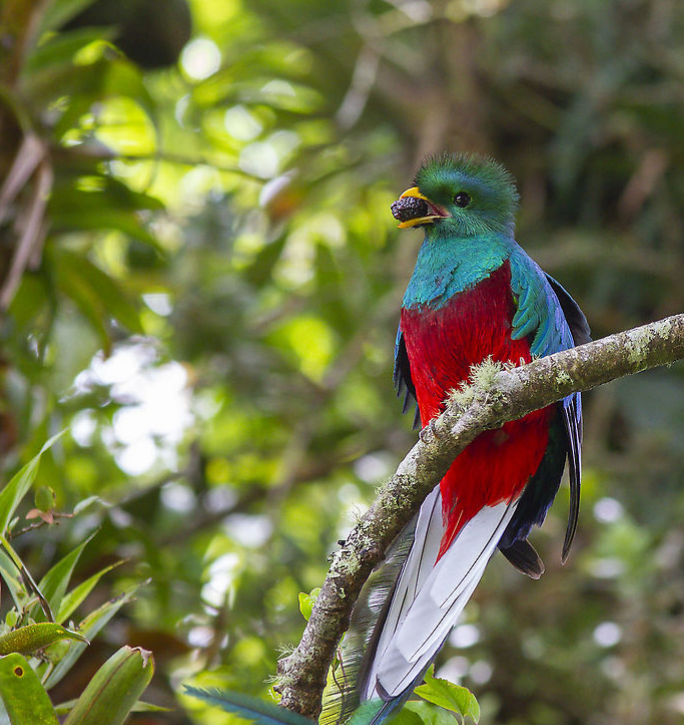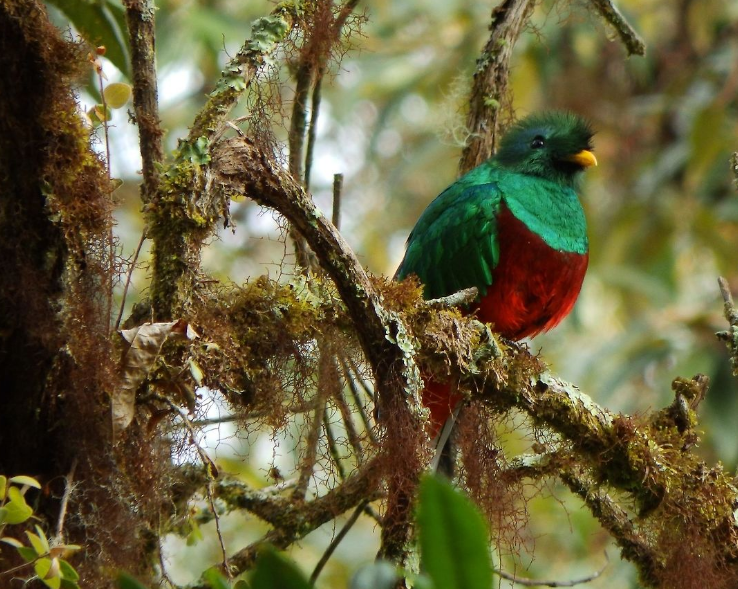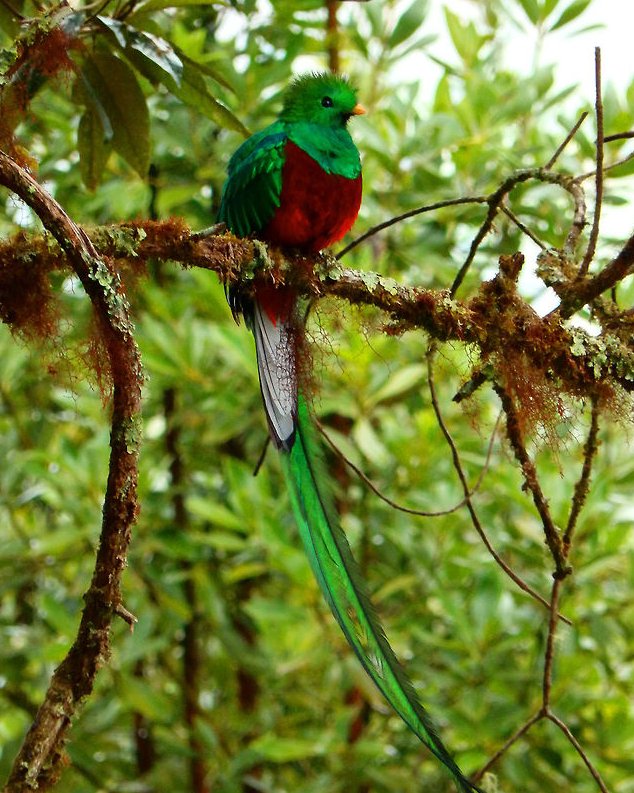The resplendent quetzal (Pharomachrus mocinno), found in cloud forests from Southern Mexico to western Panama.
The resplendent quetzal, scientifically known as Pharomachrus mocinno, is a breathtaking bird species that inhabits the lush cloud forests spanning from Southern Mexico to western Panama. Renowned for its vibrant plumage and symbolic significance, the quetzal holds a special place in the hearts of people and the ecosystems it calls home.
One cannot help but be captivated by the resplendent quetzal’s appearance. The male quetzal boasts an array of stunning colors, with its iridescent emerald-green plumage shimmering in the dappled sunlight of the forest canopy. Its long, graceful tail feathers extend in a resplendent display, often exceeding its body length. These tail feathers, once prized by ancient civilizations, have been revered as symbols of wealth, power, and beauty for centuries.
The female quetzal, although lacking the striking long tail feathers of its male counterpart, possesses its own unique charm. With a more subtle green coloration and a reddish breast, she exudes an understated elegance. Together, the male and female quetzals create a remarkable sight amidst the misty cloud forests they inhabit.
The cloud forests serve as the perfect sanctuary for the quetzal. These montane ecosystems, characterized by their perpetually damp and mist-laden atmosphere, provide an abundance of food and shelter for this majestic bird. Quetzals primarily feed on fruits, especially those from the laurel family, which play a vital role in their diet. The forests’ dense vegetation and moss-covered branches provide ample hiding places and nesting sites for these magnificent creatures.
Beyond their aesthetic allure, quetzals also play a significant ecological role. As they feed on fruits, they inadvertently assist in seed dispersal, aiding in the regeneration of the forest. Additionally, their nest cavities serve as shelters for other bird species, fostering biodiversity within the cloud forest ecosystem.
Despite their inherent splendor, quetzals face various threats to their survival. Deforestation, driven by human activities such as logging and agriculture, poses a significant risk to their habitat. Fragmentation of the cloud forests further isolates quetzal populations, hindering their ability to find suitable mates and sustain healthy populations. Climate change and illegal wildlife trade also contribute to the challenges faced by these magnificent birds.
Conservation efforts are underway to protect the resplendent quetzal and its habitat. Local communities, environmental organizations, and governments collaborate to establish protected areas and promote sustainable practices. Education and awareness campaigns raise appreciation for the quetzal’s importance, encouraging responsible tourism and reducing detrimental human impacts.
By safeguarding the cloud forests and preserving the unique habitats in which the resplendent quetzal thrives, we ensure the continued existence of this remarkable species. The quetzal’s presence serves as a reminder of nature’s extraordinary beauty and the need to protect and conserve our natural heritage for generations to come.
Hits: 0










